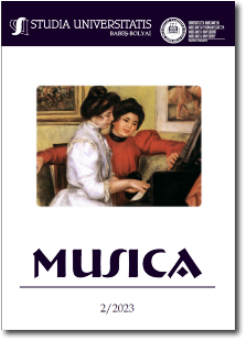INTERPRETATIVE ELEMENTS OF GYÖRGY KÓSA’S CHINESE SONG SERIES FROM AN ART PSYCHOLOGY PERSPECTIVE
INTERPRETATIVE ELEMENTS OF GYÖRGY KÓSA’S CHINESE SONG SERIES FROM AN ART PSYCHOLOGY PERSPECTIVE
Author(s): Krisztina SinkaSubject(s): Music
Published by: Studia Universitatis Babes-Bolyai
Keywords: Chinese songs; György Kósa; Po Chü-i’s poetry; Sándor Weöres; performing arts; creative arts; singing voice; Stella Ferch;
Summary/Abstract: I got to know the art of György Kósa (1897-1984) during my performing career. During the performances of the first Chinese Songs series, the songs inspired me to learn more about the composer. Delving into the literature shed light on the composer’s artistic concept, elements of which I can identify with also as a performer. It can be said that, even if we focus only on his songwriting, his most important role as a songwriter is to communicate values. His choice of lyrics is based on a profound knowledge of twentieth-century Hungarian and world literature, and his literary themes represent both the cultural and mental-spiritual well-being of the time, and satisfy the musician’s need for expression, both on a personal and a communal level. György Kósa’s oeuvre as a songwriter is a densely woven structure, consistently and organically formed. The songs are each a microcosm of their own, linked to a particular state of being, time and emotional mood of the individual, and in portraying this, the literary and musical tools employed can all be accurately mapped.
Journal: Studia Universitatis Babes-Bolyai - Musica
- Issue Year: 68/2023
- Issue No: 2
- Page Range: 279-286
- Page Count: 8
- Language: English

